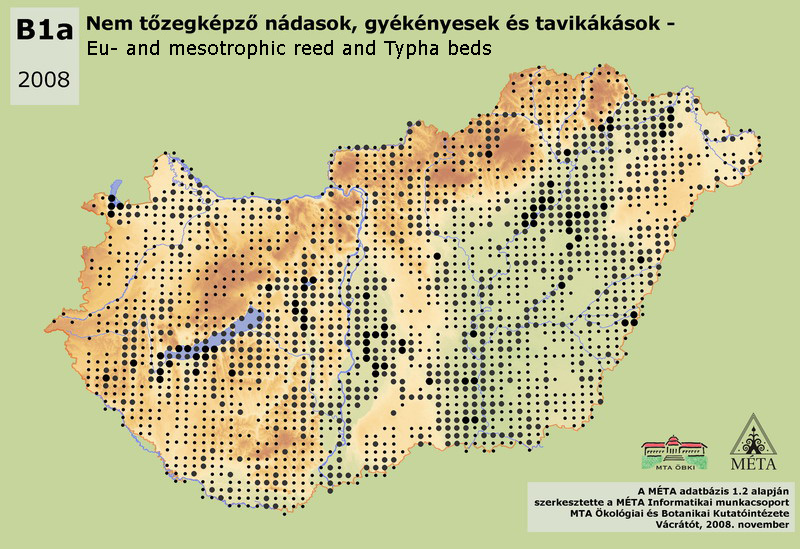MÉTA Program >>> Habitat distribution maps


B1a – Eu- and mesotrophic reed and Typha beds:
High, rooted, dense vegetation of waters and water fringes without the formation of peat. Phragmites australis, Typha latifolia and T. angustifolia compose the habitat, as a monodominant species or in mixed stands. The semi-natural sites are inundated at least seasonally during the vegetation period. One of the most widespread treeless habitat of Hungary; its actual area is around 60000 ha. The habitat is most frequent on Tiszai-Alföld (24700 ha), but also common on Dunai-Alföld (15000 ha). It occurs everywhere on former floodplains, and in fens; it is missing just from the driest parts of loess ridges and sand regions. The habitat covers smaller area on Kisalföld (5800 ha) and in the Dunántúli-dombság (7600 ha). It is widespread, but occurs typically in small stands on Nyugat-Dunántúl (2500 ha), in the Dunántúli- (1400 ha) and Északi-középhegység (2600 ha), but it is mostly missing from the inner part of the mountains. Part of the B1a stands have developed during the drying or eutrophication of other habitats, or on wet meadows after abandonment of mowing and grazing (reed is often spreading on these sites). The classification of these transitional stands is uncertain.
Molnár, Zs., M. Biró, J. Bölöni & F. Horváth (2008): Distribution of the (semi-)natural habitats in Hungary I.: Marshes and grasslands, Acta Botanica Hungarica 50 (Suppl): 59-105. >>> letöltés (5,4 MB, PDF)
MÉTA Program,
MÉTA Fotótár
MÉTA Élőhely-Ismereti Útmutató (ÉIÚ),
MÉTA Adatlap-Kitöltési Útmutató (AL-KÚ)
(C) MÉTA Informatika, 2005-2009,
MTA Ökológiai és Botanikai Kutatóintézete